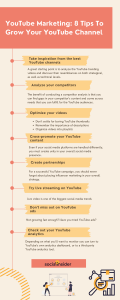I had an interesting call with a potential client today. He was interested in extending his reach using social media. Part of the problem was that he has two different lives. He had a life as a financial advisor and a life as a musician/composer. One of the things that we had to immediately come to an agreement on is that he can probably be a thought leader, but he’d have to pick a lane.
There are three things most of us need in order to become a thought leader and they are Purpose, Passion, and a Plan. So let’s start with the purpose.
Purpose
The very first thing that I ask people when they want to learn how to become a thought leader is – what is your mission, what is your vision, and what is your value? Let me dive deeper into each of these.
Mission
The mission is to understand, “Why bother to become a thought leader?” In the case of financial planning, that’s easy. If you become a thought leader, chances are you’re going to be able to get more customers. In the case of a musician, you may get more listeners. But, will you make more money?

That’s one of the challenges I’ve run into all the time. People say, “I want to sell my book.” Okay, yeah, you want to be a thought leader on the topic of your book, but the problem is that books don’t generally make people a lot of money. The average person will sell maybe a hundred books. More often than not, they’re selling them to their family and friends. So if it has a financial purpose, what is the mission? Why do you want to do it? And it should have some ROI attached to it. It should be able to make you money. If you just want to do it for a cause, that’s okay, but you have to be willing to put time, talent and treasure into that and expect nothing in return.
Vision
Next, what is your vision? What will happen once you become a thought leader? How will people react? Where do you want them to go? What do you want them to do? Once you become a thought leader, what is the outcome of that? You have to understand the complete system, process, or journey you will take your followers through.
Value
Finally, it’s about the value. The people that are following you as a thought leader will think about WIIFM (What’s In It For Me?). What is in it for the people that follow you as a thought leader? What do they get out of it? Maybe an education, experience, or inspiration. Whatever it is, what is the outcome you expect from those people?
Passion
The next piece is passion. In my next Bacon Podcast interview (Episode 577) I talk with Jim Barry, who defines and breaks down the archetypes of thought leadership. I was honored to be part of an academic study on the topic with 170 other social media thought leaders.
He wrote a previous article on LinkedIn. There, he broke down thought leaders into eight different categories.
- Charismatics – people that hit you in the heart.
- Coaches – people that provide you content that helps you grow.
- Entertainers – that tend to keep you engaged with stories or comedic routines.
- Evangelists – who tend to be advocates for technology, platforms, or concepts.
- Strategists – who tend to have a system. They have practices and technology that work across multiple platforms.
- Teachers – who tend to use webinars and workshops to engage you with very specific instruction.
- Tutors – who are a lot like teachers, but tend to use a lot more examples, worksheets and more step-by-step instruction.
- Visionaries – who tend to have deep analytical thought and they talk about the future and predictions or changes in culture.
Any of these can be a way of becoming a thought leader. I suggest you go look at that LinkedIn article. Read the commentary and watch the videos so you can get a sense of how each one of those different thought leader styles are defined in more detail. The bottom line is, you have to pick one. Authenticity is huge.
In the case of that client call i mentioned earlier, does he want to be a thought leader around financials or does he want to be a thought leader around music? Now, if he was a musical financial leader, that would be one thing, but he was looking at two different audiences with two different messages. The bottom line, he had to pick a lane and we’ve yet to determine which one of those he will choose. Once we figure it out, we’re going to pick that lane and stick to it.
You have to first think about what’s your purpose? What’s your mission? The next thing you have to think about is how you want to deliver the thoughts? How is that going to be packaged?
Plan

The last piece of this is the plan. How are you going to deliver it? Currently, that potential client is doing long-form videos, which are awesome. The one problem though, in the financial world, things change daily. So what he’s done this week will not be applicable next week. We have to figure out how we can we take those videos and mix in some evergreen content that can be used over and over and over again.
People who know, like, and trust this person may be willing to invest an hour in watching something, but you have to have a plan for people that don’t know you. You have to be able to create awareness. Give them a reason to want to spend an hour listening to you talk about the current financial structure of the world.
You have to pick and choose what you’re going to do daily. What are you going to do weekly? And what are you going to do monthly?
In the case of being a thought leader, most thought leaders do a daily social media post. Think of somebody like Seth Godin or Chris Brogan. When it comes to weekly, you tend to email out things that are kind of encapsulating a theme. What’s happened over the course of this time, or what is the theme of the week? For monthly, you may want to do a webinar a month, which is that one hour piece. In other words, create some graphics or some simple stuff on social. Then, weekly, put together pieces of that into an email so that it can be encapsulated and people can go back and review it.

Once they’ve accepted your awareness graphics and your emails, then you can invite them to a webinar. Now you’re asking them for an hour of their time. If they’ve liked what you’ve done on the daily and the weekly pieces, chances are they will pay attention to the monthly.
It doesn’t necessarily mean you can’t do a webinar a week, but you have to have a plan as to how you’re going to draw people in, how you’re going to start to build that know, like, and trust. Then finally, how can you get them to a point where they like you and trust you enough to do business? Because trust has to be earned and it’s going to take some time. They may come in after the first webinar or it could be the 12th webinar. You never know when somebody’s going to make a decision to work with you.
Final Thoughts

When you’re trying to become a thought leader, you have to have a purpose or, why bother? What’s going to happen from it? And what will the end-user get? Next, you have to show your passion. How are you going to deliver those messages so they connect with the right audience at the right time? And then you have to have that plan of what you’re going to do daily, weekly, and monthly. So, if you want to be a thought leader, you’re going to have to think about it first.
I would love to hear your thoughts on this. Comment below and share your thoughts, ideas or questions about thought leadership. Have you had to overcome any of the presented concepts? What worked and what did not live up to your expectations? Do you have any ideas or advice you could share?
Business & Finance Articles on Business 2 Community
(26)







